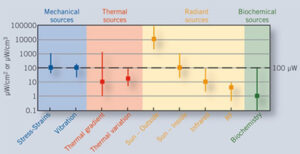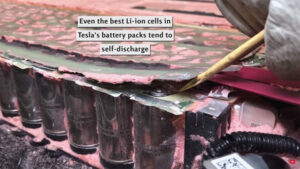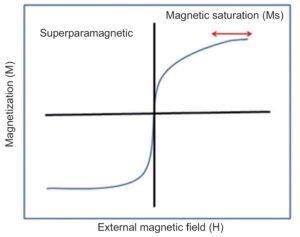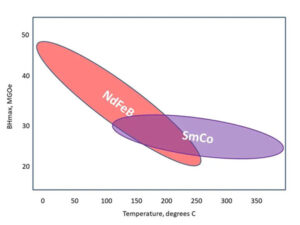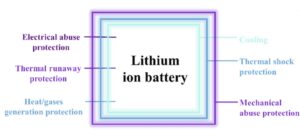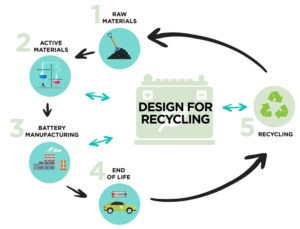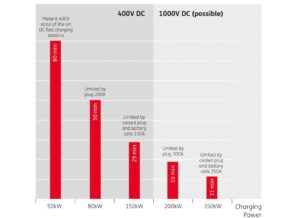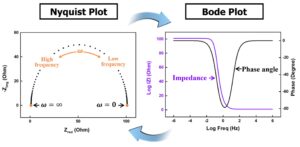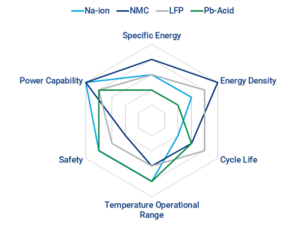Energy harvesting (EH) can be an attractive way to power wireless internet of things (IoT) and other small devices. EH can be combined with rechargeable batteries, capacitors, or supercapacitors to provide enhanced performance. Depending on the circumstances, primary batteries can provide a more reliable and even lower-cost option. This FAQ looks at ways to classify…
Why self-discharge is important in batteries
Self-discharge refers to the declining state of charge of a battery while the battery is not being used. In most instances, self-discharge cannot be eliminated but needs to be managed. Too high a self-discharge rate can limit the potential applications for a battery. Depending on the battery chemistry and construction, there can be several causes…
What are the six kinds of magnetism?
Diamagnetism, paramagnetism, ferromagnetism, ferrimagnetism, antiferromagnetism, and superparamagnetism are the six kinds of magnetism. This FAQ begins with a brief review of the basic sources of magnetism, considers the magnetic susceptibility of various materials, and then briefly presents the characteristics of the six types of magnetism. The root cause of magnetism is the behavior of electrons,…
Rare earths and EVs — it’s not about batteries
Rare earths play an important part in the sustainability of electric vehicles (EVs). While there are sustainability challenges related to EV batteries, rare earths are not used in lithium-ion batteries. They are necessary for the magnets that form the main propulsion motors. The batteries mostly rely on lithium and cobalt (not rare earths). At the…
What are the top ten Li battery regulations?
That depends. There is a wide range of regulations for lithium (Li) batteries. Some regulations, like those related to the transport of Li batteries and Li battery packs, have a broader impact than application-focused regulations like those for Li battery packs in electric vehicles (EVs) or industrial systems. This FAQ begins by looking at three…
Are Li-ion or Na-ion batteries a more sustainable technology?
That’s a complex and dynamic question without a simple answer. The electrification of everything is expected to lead to post-lithium-ion battery (LIB) technologies like potassium-ion batteries (PIBs), sodium-ion batteries (SIBs), and possibly more exotic chemistries. In the near term, the dominance of LIBs will be almost unassailable. The key word is “almost”. Among the keys…
What’s the difference between quick charge and extreme fast charge?
Several things. First, quick charge is used with devices like smart phones and tablet computers, while extreme fast charging (XFC) is used with electric vehicles (EVs). Quick charge (QC) is generally slower than extreme fast charge. QC has competitors like universal serial bus power delivery (USB-PD), IEC 62680-1-2:2022, and USB extended power range (EPR). Tesla…
When does DC coupling maximize the performance of battery storage plus solar?
System architecture choices can significantly impact the delivery of reliable and sustainable energy from solar energy systems with integrated battery storage. DC-coupled systems can deliver improved energy production but can have less operational flexibility. And, while DC-coupled systems are more straightforward in terms of hardware, their control and management software needs can be more complex.…
What does electrochemical impedance spectroscopy have to do with Li-ion health?
Electrochemical impedance spectroscopy (EIS) can be used for estimating the power delivery capability and state of health (SoH) of Li-ion batteries. It is important because it has the potential to improve rapid and accurate SoH monitoring of Li-ion batteries and support more sustainable battery storage systems for electric vehicles (EVs) and grid-scale energy storage systems.…
What are alternatives to Li-ion batteries?
There are many alternatives to Li-ion batteries, including fuel cells, various types of supercapacitors, redox flow batteries, novel Li-based chemistries such as lithium-sulfur (LiS), and more. This FAQ focuses on alternative non-lithium rechargeable battery chemistries, including calcium-ion (Ca-ion), magnesium-ion (Mg-ion), sodium-ion (Na-ion), zinc-ion (Zn-ion), iron-air (Fe-air), and sodium-sulfur (NaS) that can be more readily integrated…

